Since the declaration of Russia’s war against Ukraine, various online activities to disseminate the information of the conflict occur daily, the most followed and assisted armed conflict almost instantaneously in the history of humanity.
The President of Ukraine is an expert in media, and several media are already declaring a Ukrainian victory in the “information and media war”, as the larger public opinion is allied with the movements of Ukraine while condemning Russia vehemently.
This is part of the political agenda of war propaganda, where nations disclose their objectives and interests while lowering the enemy’s morale. It is a historical movement that is part of military conflicts.
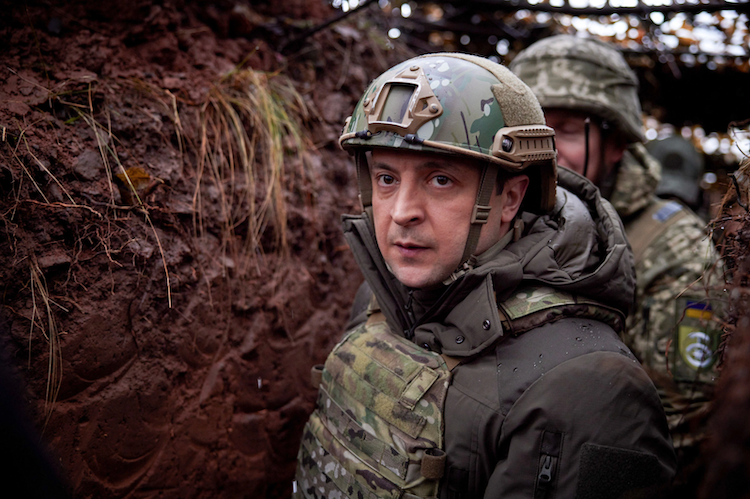
History of military propaganda during wars
War propaganda are used in almost all armed conflicts, having their greatest use on a large scale in World War I and World War II, where the opposing sides defended their objectives and values through leaflets distributed by planes.
War advertisements took even greater proportions in World War II by the Nazis. Adolf Hitler’s government had large investments in the production of anti-communist Nazi propaganda, with Joseph Goebbles as head of image and propaganda department.
This is because, the disclosures through image compositions have a great power to form public opinion, and when a people is on the side of the nation in the clash, the war itself gains strength.
The advance that the Nazis had in relation to the impacts of the propaganda took place in the understanding of its strength as an instrument of maintaining unity, being able to bring neutral states in the conflict to its list of allies and to keep the national spirit alive. All these aspects help to increase the morale of soldiers on the battlefield, bringing greater success to the nation.
But Joseph Goebbels controlled not only the production of advertisements, but the Nazi artistic and cultural production itself. This was because he understood that it was no use only to draw his opponents as the great enemies in a pamphlet that people would read and throw away, as they did with Jews, communists and Americans. For war propaganda to have real impacts on public opinion it is necessary to include ideologies within the cultural field of the population.
It was this view about the role of propaganda that changed all the importance they have until today. Current wars occur in four main dimensions: military, economic, political and propaganda.
Seeking to lower the morale of the enemy to break his will to fight, the disclosure of a military success and the economic and armed power of those who make the propaganda has the objective of implementing a moral superiority of the cause against which the enemy is fighting, both in the material environment (showing that it has more efficient weapons, for example) and in the ethical environment.
In this way, the ultimate goal of propaganda is to distance an enemy leader from his people to break resistance and produce evidence that the enemy people are being deceived.
In conflicts such as Russia and Ukraine in recent weeks, the first on a large scale with simultaneous monitoring of the public and the media via social networks, it is possible to observe both sides spreading their objectives and seeking a closer relationship with the public.
With the advances of technologies, war advertisements have gained a very high rate of dissemination and social networks have become essential within the game of interests of armed conflicts.
How Ukrainian President Volodymyr Zelensky is a master in personal media promotion
In technological environments, opinion formation takes place much more quickly. Control over the different cultural spheres is more difficult, but not impossible.
Ukraine went through an anti-establishment wave, by a people who were tired of the way that extremely corrupt institutions functioned. With the anti-corruption speech and the defense of being “a man of the people” different from the experienced politicians, Volodymyr Zelensky was the president elected in 2019, carrying the history of being a former omen and actor with image already known by the local media and the people.
During his media career, the president increasingly increased his ties with the owner of TV 1+1, the oligarch, bank and financier of paramilitary forces Igor Kolomoisky, who was targeted by the previous government on corruption charges. After this controversial political scenario, just before being elected, Zelensky was part of the series Servant of the People by the station. In it, the comedian played a teacher who became president after a video of his criticizing the corruption instituted in the government and the “old policy” went viral.
When running for election, the party for which he was affiliated followed the same name as the series that starred: Servant of the People. That is, reality imitated art.
Having at first political experience an armed war with Russia, Zelensky and his entourage invest in the production of images and information to move the public and increase their support. As a man who already has experience with the emotional appeals of the media, since the beginning of the Russian invasion, Zelensky and the Ukrainian government have publicized their heroism against the great neighbouring autocracy, mobilizing the people and the international community to defend the nation.
What surprised several Ukrainian opponents was the power of popular mobilization of Zelensky. As much as he was already a public figure, the president has made several official pronouncements with a “relaxed” image, with unshaven beard and a T-shirt, as a way to demonstrate the difficulty of the position he’s in but without losing his approach while “man of the people”, provoking a popular empathy for the politician without experience.
In the official networks of the Ukrainian government, the statements are made in a personal way and with videos selfies that mixed the material reality of the Russian attacks with the direct image of the president in front of the army to defend his nation.
What can be seen in the image of the Ukrainian president is a presence both in the cultural media as a man who sought to change politics, as in social networks advertising how his country is suffering from the unjust attacks of Russia.
The movement that the Ukrainian government had in its war propaganda took place earlier of the Russian invasion itself, starting during the conflict in Donbas against the separatist forces. That is, when the direct conflict with Russia began, Ukraine already had extensive experience with military propaganda.
Zelensky is able to move civilians to take up arms, in the guerrilla scheme, to defend this national spirit that is being wounded.
Propaganda, information and military messages used by Ukraine during the war against Russia
In democratic governments, in situations of war, it is important that information be passed to the population with impartial and informative monitoring. This in itself does not necessarily fit as a propaganda of war.
However, what we observe of the Ukrainian media movement and its western allies, is an information movement to win an information war, or as a Politico placed: a #Likewar, war for likes and engagements, whether Facebook, Twitter, Reddit, or any other online media.
In the first days after the invasion, the official twitter of Ukraine, which was already posting miscellaneous memes about the Russian pressure on the border, published a caricature of Adolf Hitler fondling the face of Vladimir Putin. This post led to discussion and debate in the social network about how these memes were being used as weapons of war, until it was necessary to pronounce the official Ukrainian profile saying: “This is not a meme, but our and your reality now.”
This event led to millions of likes and replacements, which further disclosed the Ukrainian war propaganda. The media mobilization movement in Ukraine was an exercise in building public opinion even before the Russian invasion was declared, the jokes that were already part of the effort to put the Russian advances as actions without basis and without reason.
Another example of narrative manipulation by Ukraine was with “#GhostOfKiev”, a fighter pilot who would have shot down six Russian fighters. The pilot in question was compared in the media to World War II veteran Edward O’Hare, who has the best shooting record in the history of the American war. However, there is no clear evidence that this single Ukrainian pilot actually shot down the six Russians at once, but what matters is that this is what happened.
In addition, a movement of “mystification of martyrs” was made by the Ukrainian media, in defenders of a Ukrainian island verbally challenged a Russian warship with swear words when it asked them to lower their weapons. Later, the Ukrainian Navy itself reported that there are indications that these soldiers were not actually killed.
These media positions led the Russian movement to defend the invasion in search of a “denazification” of the Ukrainian armed forces did not gain as much strength as expected.
Even though Russians are considered exceptional in the production of misinformation, what can be observed is an earlier unpreparedness of Western media to check facts and verify information and not necessarily an exceptional production in fake news.
The speed with which information is disseminated makes an effort, both of journalists to follow events, and of diplomats themselves to position themselves.
The tactics of propagating its goals and ideologies through social networks is one more way to approach the people, using the forms that the public itself uses in their day to day to include their purposes in daily life and in the formation of opinion.
War propaganda is the attempt to use information to harm the enemy and win people who support you, and with new technologies and the immediacy of social networks, propaganda innovates.
What is the future trend in social media propaganda use in armed conflict?
Now, especially after the Russian influence in the American elections of 2016, there is an effort by several institutions, known as open source intelligence (OSINT), in unmasking possible false information and altered images. Bellingcat is one such institution that civilians check videos and photographs from Ukraine, publicizing what they really mean to the public.
In addition, popular movements such as hacker group Anonymous, also position themselves to decrease Russian impacts in cyber warfare of information manipulation, with a short video showing normal programming interrupted with images of bombs exploding in Ukraine and soldiers talking about the horrors of the past conflict on Russian state channels. The video went viral after the release of Anonymous’s own networks to the public.
Ukraine and the Western media will continue to position themselves on social networks as a way to villainize their enemies in public opinion. For Russia to change the tide of combat in the information war will be necessary a change in the form that makes its war advertisements, in the way that disclose its interests and objectives.
In general, in future conflicts, it is able to countries or other actors involved outsource the production of propaganda, information, and military disinformation to Public Relations and Marketing companies. It would be a new niche for these companies to work for countries at war in the same way that they already work with countries with a bad international image like Saudi Arabia.
This private public partnership of propaganda production to improve the image of a country, war or not, only tends to increase. One of the main maxims of wars will become increasingly relevant: “The first victim of War is the Truth”.

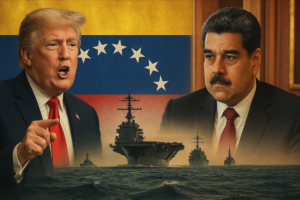


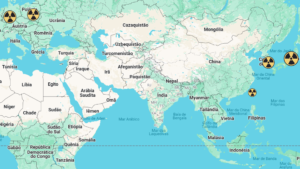
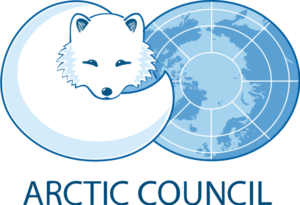


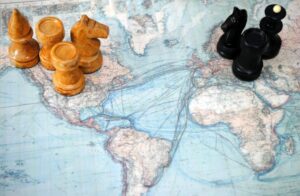


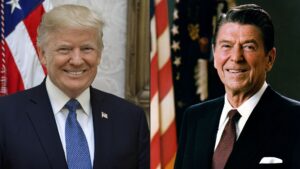
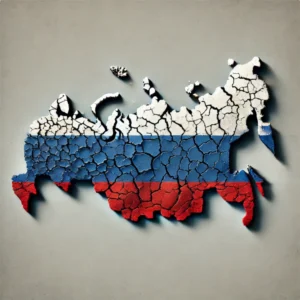
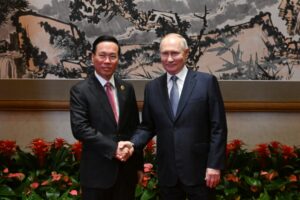

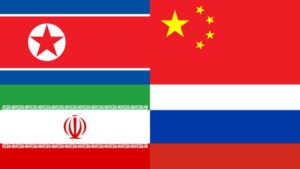



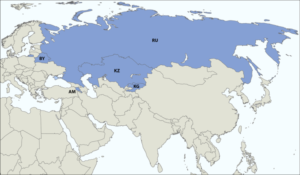

[…] technological advances, the information warfare, and space consequently (since the data needs the satellite networks), they are part of a tendency […]
[…] countries seek to help Ukraine defend itself from Russian attacks and strengthen its long-term defense, and Ukraine’s Deputy […]